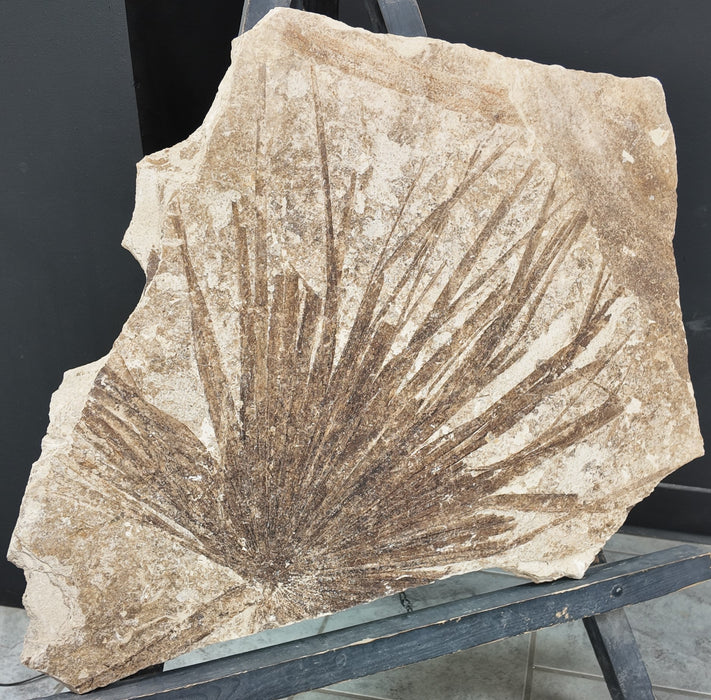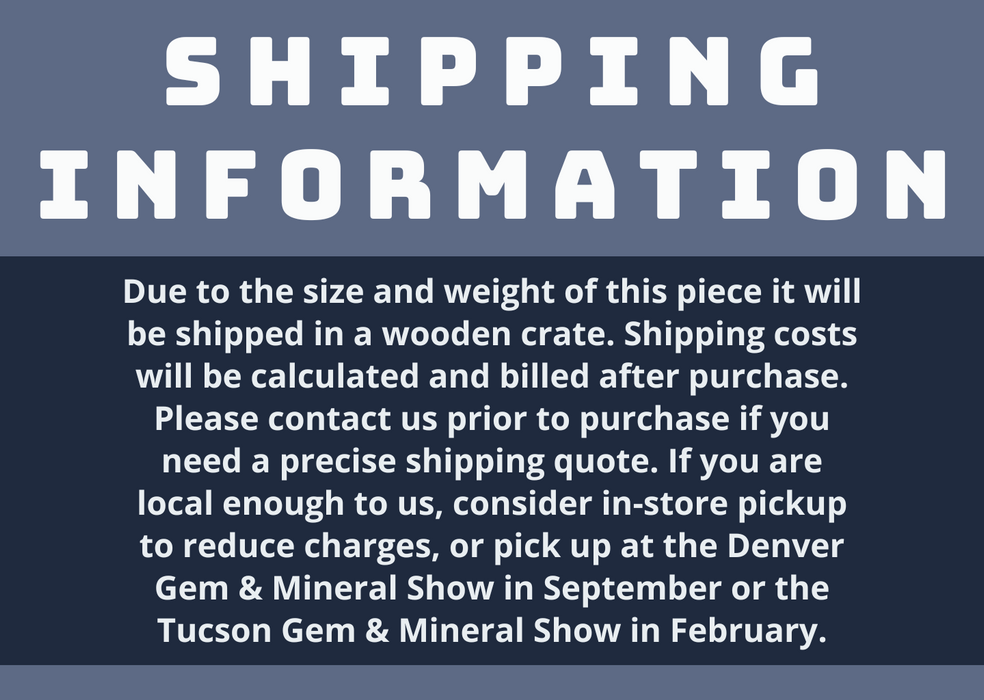
Sabalites powelli Fossil Palm Leaf | Green River Formation | Wyoming
Sabalites powellii, an extinct species of palm frond in the family Arcaceae.
Palm - Palmites species
Order Arecales
Family Arecaceae
Palm inflorescences (a group of flowers arranged on a stem) and palm fronds (pictured here) are common fossil specimens from the FBM. Variation in morphology of specimens indicates Fossil Lake may have been home to several palm species. No FBM palm species have been described as of yet. Abundance of large and complete palm frond specimens suggests there may have been palm trees near the shores of Fossil Lake. There are over 2,000 living palm species, found naturally in tropical, sub-tropical, and humid environments. Palm specimens are indicators of a warm, sub-tropical environment at Fossil Lake.
"Palms are another one of the FBM [Fossil Butte Member] monocots, and one of the most impressive of the FBM plant fossils. One species identified in the FBM is Sabalites powelli (Newberry 1883). There may be other species present too. Palm fronds are very common in the FBM, both in the 18-inch layer and the sandwich beds, although they are often more difficult to see in the nearshore sandwich beds because the plant fossils there often lack contrasting color (i.e., they are the same color as the matrix)." - The Lost World of Fossil Lake.



